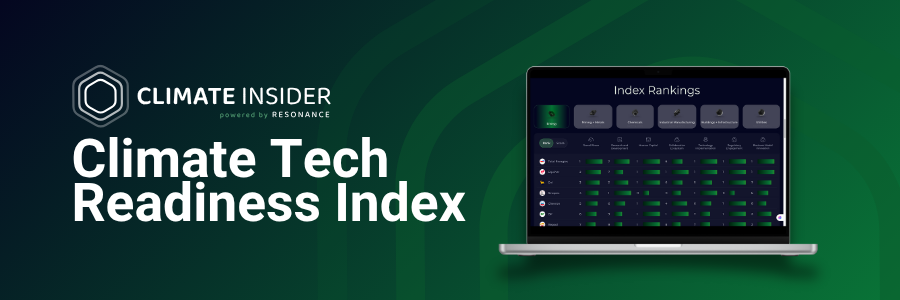The World Energy Outlook 2024 by the International Energy Agency (IEA) offers a detailed assessment of the global energy landscape, capturing critical trends in energy demand, supply, and the shift towards cleaner technologies. The report reflects a world that is still heavily reliant on fossil fuels, despite growing momentum in the adoption of renewable energy. This in-depth analysis explores the main findings of the report, delves into the opportunities for accelerating clean energy transitions, and highlights the challenges that could hinder global climate goals.
Energy Demand and Transition Trends
The world’s energy demand has increased by 15% over the past decade, yet fossil fuels continue to dominate the energy mix, constituting 80% of global consumption. However, this report marks a turning point, predicting that demand for oil, gas, and coal will peak before 2030 across all scenarios. Clean energy sources—comprising renewables, nuclear, and low-emission fuels—have accounted for 40% of the rise in demand, with renewable energy, in particular, seeing unprecedented growth in recent years.
While the deployment of clean energy is accelerating globally, the rate of adoption is uneven, particularly between advanced economies and emerging markets. In the developed world, energy demand has stagnated, while in emerging and developing economies, energy consumption has been rising at an average annual rate of 2.6%. The drivers of this increase include rapid population growth, industrialization, and urbanization. In these regions, oil, gas, and coal still play a major role, and clean energy must work harder to displace traditional fossil fuels than it does in more mature markets.
Nonetheless, the report underscores a significant milestone: clean energy sources are poised to meet virtually all the growth in global energy demand from 2023 onward, which will lead to a gradual decline in fossil fuel use after 2030. This transformation is powered largely by the expansion of solar and wind energy, which are expected to be the dominant forces in the global energy mix by the mid-2030s. However, this transition is not happening fast enough to meet global climate goals. Even with a tripling of renewable energy capacity, current trajectories fall short of the levels needed to keep global warming within 1.5°C by 2050.

The Rising Importance of Electricity
Electricity is at the heart of the energy transition, with demand expected to grow twice as fast as overall energy demand over the next decade. This surge in demand is driven by the electrification of sectors such as transportation and heating, alongside the growth of data centers and cooling systems in a rapidly warming world. The report projects that by 2030, global electricity demand will increase by 6% compared to previous estimates, primarily driven by growth in electric vehicles (EVs), digital infrastructure, and air conditioning.
One of the key findings of the World Energy Outlook 2024 is that more than 560 gigawatts (GW) of new renewable capacity was added globally in 2023. This figure is expected to rise to nearly 10,000 GW by the end of the decade, which would be enough to cover the rising demand for electricity. The scale of renewable energy deployment is remarkable; for instance, China’s solar photovoltaic (PV) generation is on track to exceed the total electricity demand of the United States by the early 2030s.
While this rapid expansion of renewable energy is crucial, the report emphasizes that countries must overcome several hurdles to ensure that these clean energy sources are integrated into existing power grids. Grid infrastructure, in particular, has not kept pace with the expansion of renewables, leading to concerns over the ability of electricity networks to handle the variability of solar and wind power. Many countries are already facing bottlenecks in their efforts to expand their grids, and if these issues are not addressed, they could slow the transition to a cleaner energy system.
Geopolitical Tensions and Energy Security
The issue of energy security is central to the World Energy Outlook 2024, particularly in the context of rising geopolitical tensions. The world’s energy infrastructure remains vulnerable to disruptions, as demonstrated by the ongoing war in Ukraine and escalating conflicts in the Middle East. Around 20% of the world’s oil and liquefied natural gas (LNG) supplies pass through the Strait of Hormuz, a critical chokepoint that has been the subject of geopolitical volatility. Any significant disruption to this route could have severe consequences for global energy markets.
Despite these geopolitical risks, the report notes that the global energy market is moving towards a more balanced supply and demand outlook. A substantial increase in LNG export capacity, particularly from the United States and Qatar, is expected to add nearly 50% more LNG to the global market by 2030. This increase will provide a buffer against potential supply shortages, which in turn could lead to downward pressure on LNG prices.
While this surge in supply is positive, the report warns that high LNG prices could still pose a barrier to its adoption in many emerging markets, particularly in countries where natural gas competes with cheaper alternatives like coal and renewables. The challenge for LNG producers will be to find a balance between recovering their investment costs and ensuring that their product remains competitive in price-sensitive markets.
The broader implications of these geopolitical tensions are profound. Energy-importing regions, particularly in Asia, are expected to see rising dependence on oil and gas imports over the next few decades, increasing their exposure to global market fluctuations. China, already the world’s largest importer of oil, is projected to increase its dependence on foreign supplies to more than 80% by 2050, while India’s natural gas import reliance is expected to rise from 50% to nearly 75% over the same period.
Investment Gaps and Financing Challenges
One of the most striking conclusions from the World Energy Outlook 2024 is the stark disparity in clean energy investment between advanced economies and developing regions. Despite the fact that emerging and developing economies account for 85% of the world’s population and the majority of future energy demand growth, these regions receive just 15% of global clean energy investment. This imbalance highlights a significant barrier to achieving global climate goals, as the countries that need the most investment are currently being left behind.
The report outlines several reasons for this investment gap. High financing costs, regulatory uncertainty, and a lack of robust policy frameworks in many developing countries have deterred investors from committing capital to clean energy projects. Additionally, the perceived risks associated with investing in these markets—whether related to currency fluctuations, political instability, or the lack of reliable infrastructure—have further raised the cost of capital.
Addressing these barriers will be critical if the world is to accelerate its transition to a low-carbon energy system. The report calls for increased international cooperation to lower financing costs and improve access to capital for clean energy projects in developing countries. Multilateral development banks, governments, and private investors must work together to create an enabling environment that de-risks investments in emerging markets. Without these efforts, the report warns, developing economies will struggle to meet their growing energy needs sustainably.
Methane Emissions and Climate Goals
A major area of concern highlighted by the report is the persistent issue of methane emissions from fossil fuel operations. Methane is a highly potent greenhouse gas, with a global warming potential significantly higher than carbon dioxide over the short term. Reducing methane emissions is one of the most cost-effective ways to mitigate climate change, yet progress in this area has been slow and uneven across different regions.
The energy sector, particularly oil and gas operations, has the potential to achieve significant methane reductions using existing technologies. However, the report emphasizes that the enforcement of methane regulations remains weak, and many countries lack the necessary infrastructure to monitor and reduce emissions effectively. Stronger international cooperation and more rigorous enforcement of methane reduction policies will be essential to addressing this challenge.
Despite the slow progress in methane abatement, there are signs of optimism. Several oil and gas companies have made voluntary commitments to reduce their methane emissions, and new technologies for detecting leaks are becoming more widely available. However, much more needs to be done to ensure that these efforts are scaled up globally, particularly in regions where methane emissions are highest.
Climate Insider Analysis
The World Energy Outlook 2024 offers a comprehensive and data-driven assessment of the energy landscape, with a clear message: while progress is being made, the world is not moving fast enough to meet its climate goals. The momentum behind clean energy transitions is strong, but without more concerted efforts, particularly in emerging economies, global emissions will continue to rise, putting the planet on a dangerous trajectory.
The report highlights the urgent need to address the investment gap in clean energy, particularly in developing regions. Multilateral action will be crucial to ensuring that all countries have access to the financing and technologies they need to transition to low-carbon energy systems. Moreover, the energy sector must act quickly to curb methane emissions, which represent a low-hanging fruit in the fight against climate change.
Looking ahead, the report emphasizes the importance of international collaboration in navigating the geopolitical risks that continue to threaten global energy security. The transition to clean energy is not only a solution to the climate crisis but also a way to reduce the world’s reliance on volatile fossil fuel markets. However, this transition will require substantial investment, policy support, and innovation to ensure that the world’s energy future is sustainable, resilient, and equitable for all.
Featured Image: Credit: World Energy Outlook 2024








